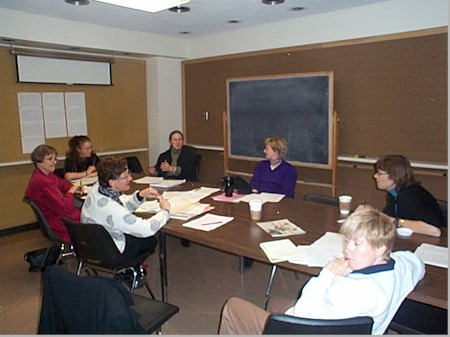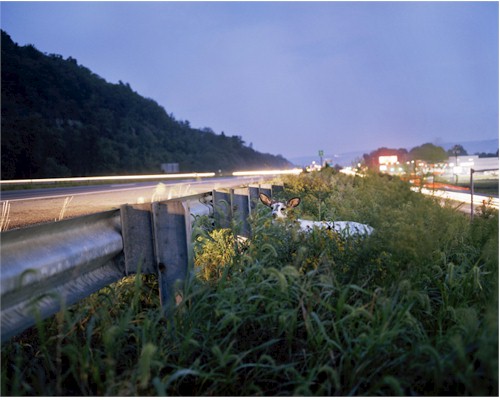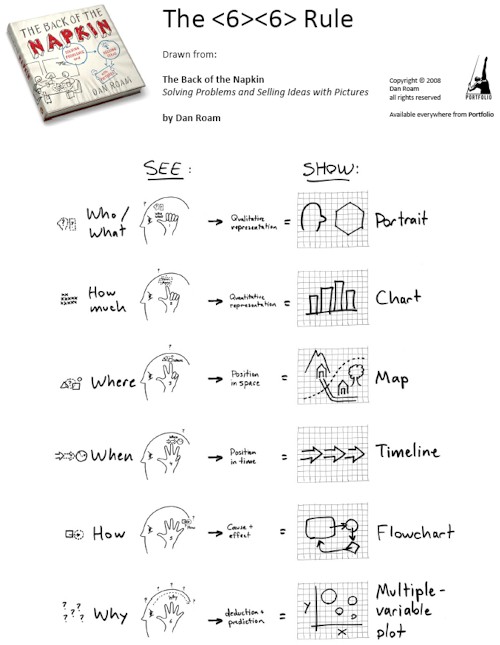| A short article from last year, that generated a fair bit of buzz, reproduced in its entirety:
For those of us who do not live in the US, the situation is hardly better. The corporate oligopolies own or control most of the industry, land and resources in most of the world’s struggling nations and many affluent nations, and anti-democratic ‘free’ trade agreements subvert domestic laws to the ‘right’ of global corporate oligopolies to freedom from regulation or restriction of trade in any signatory nation, regardless of the social and environmental damage that ‘right’ brings with it. As a consequence, the systems that govern us are not governed in our interest:
The US war of independence was fought against an elite occupying force imposing its will on the majority. The only differences today are that the occupation is global, and that the means of control are more technologically advanced and pervasive. So how could we take back our land, our resources, our civil freedoms, our democracy, our economic and education systems? The first step, I think, is to realize that we still have the power, if we have the will to exercise it. This world is too vast and complex for any group to control it, and even its human systems cannot be controlled by any elite without the acquiescence of the large majority. The second step is to realize that Bucky was right: “You never change things by fighting the existing reality. To change something, build a new model that makes the existing model obsolete.” We won’t win zoning battles or economic control battles or electoral system battles or proportionate representation battles in the courts or the election campaigns or the markets that are controlled by the elite. We must instead walk away from these corrupt and dysfunctional systems and build new ones, responsive and responsible and sustainable alternatives that others can look at and say “yes, that works much better”. So here is what we need to do:
We do not need them. That is the power we have that they do not. All it takes is a willingness to use it. I think it’s just a matter of time. I believe more and more of us are realizing what we have lost, including our independence. It is human nature to want to be independent, to be self-sufficient, to seek meaningful community, and if necessary to fight for these things. We’ve done without them long enough. It’s time to build a new model, a betterway of living. We need to be free. Category: Building a Community-Based Society
|
Navigation
Collapsniks
Albert Bates (US)
Andrew Nikiforuk (CA)
Brutus (US)
Carolyn Baker (US)*
Catherine Ingram (US)
Chris Hedges (US)
Dahr Jamail (US)
Dean Spillane-Walker (US)*
Derrick Jensen (US)
Dougald & Paul (IE/SE)*
Erik Michaels (US)
Gail Tverberg (US)
Guy McPherson (US)
Honest Sorcerer
Janaia & Robin (US)*
Jem Bendell (UK)
Mari Werner
Michael Dowd (US)*
Nate Hagens (US)
Paul Heft (US)*
Post Carbon Inst. (US)
Resilience (US)
Richard Heinberg (US)
Robert Jensen (US)
Roy Scranton (US)
Sam Mitchell (US)
Tim Morgan (UK)
Tim Watkins (UK)
Umair Haque (UK)
William Rees (CA)
XrayMike (AU)
Radical Non-Duality
Tony Parsons
Jim Newman
Tim Cliss
Andreas Müller
Kenneth Madden
Emerson Lim
Nancy Neithercut
Rosemarijn Roes
Frank McCaughey
Clare Cherikoff
Ere Parek, Izzy Cloke, Zabi AmaniEssential Reading
Archive by Category
My Bio, Contact Info, Signature Posts
About the Author (2023)
My Circles
E-mail me
--- My Best 200 Posts, 2003-22 by category, from newest to oldest ---
Collapse Watch:
Hope — On the Balance of Probabilities
The Caste War for the Dregs
Recuperation, Accommodation, Resilience
How Do We Teach the Critical Skills
Collapse Not Apocalypse
Effective Activism
'Making Sense of the World' Reading List
Notes From the Rising Dark
What is Exponential Decay
Collapse: Slowly Then Suddenly
Slouching Towards Bethlehem
Making Sense of Who We Are
What Would Net-Zero Emissions Look Like?
Post Collapse with Michael Dowd (video)
Why Economic Collapse Will Precede Climate Collapse
Being Adaptable: A Reminder List
A Culture of Fear
What Will It Take?
A Future Without Us
Dean Walker Interview (video)
The Mushroom at the End of the World
What Would It Take To Live Sustainably?
The New Political Map (Poster)
Beyond Belief
Complexity and Collapse
Requiem for a Species
Civilization Disease
What a Desolated Earth Looks Like
If We Had a Better Story...
Giving Up on Environmentalism
The Hard Part is Finding People Who Care
Going Vegan
The Dark & Gathering Sameness of the World
The End of Philosophy
A Short History of Progress
The Boiling Frog
Our Culture / Ourselves:
A CoVid-19 Recap
What It Means to be Human
A Culture Built on Wrong Models
Understanding Conservatives
Our Unique Capacity for Hatred
Not Meant to Govern Each Other
The Humanist Trap
Credulous
Amazing What People Get Used To
My Reluctant Misanthropy
The Dawn of Everything
Species Shame
Why Misinformation Doesn't Work
The Lab-Leak Hypothesis
The Right to Die
CoVid-19: Go for Zero
Pollard's Laws
On Caste
The Process of Self-Organization
The Tragic Spread of Misinformation
A Better Way to Work
The Needs of the Moment
Ask Yourself This
What to Believe Now?
Rogue Primate
Conversation & Silence
The Language of Our Eyes
True Story
May I Ask a Question?
Cultural Acedia: When We Can No Longer Care
Useless Advice
Several Short Sentences About Learning
Why I Don't Want to Hear Your Story
A Harvest of Myths
The Qualities of a Great Story
The Trouble With Stories
A Model of Identity & Community
Not Ready to Do What's Needed
A Culture of Dependence
So What's Next
Ten Things to Do When You're Feeling Hopeless
No Use to the World Broken
Living in Another World
Does Language Restrict What We Can Think?
The Value of Conversation Manifesto Nobody Knows Anything
If I Only Had 37 Days
The Only Life We Know
A Long Way Down
No Noble Savages
Figments of Reality
Too Far Ahead
Learning From Nature
The Rogue Animal
How the World Really Works:
Making Sense of Scents
An Age of Wonder
The Truth About Ukraine
Navigating Complexity
The Supply Chain Problem
The Promise of Dialogue
Too Dumb to Take Care of Ourselves
Extinction Capitalism
Homeless
Republicans Slide Into Fascism
All the Things I Was Wrong About
Several Short Sentences About Sharks
How Change Happens
What's the Best Possible Outcome?
The Perpetual Growth Machine
We Make Zero
How Long We've Been Around (graphic)
If You Wanted to Sabotage the Elections
Collective Intelligence & Complexity
Ten Things I Wish I'd Learned Earlier
The Problem With Systems
Against Hope (Video)
The Admission of Necessary Ignorance
Several Short Sentences About Jellyfish
Loren Eiseley, in Verse
A Synopsis of 'Finding the Sweet Spot'
Learning from Indigenous Cultures
The Gift Economy
The Job of the Media
The Wal-Mart Dilemma
The Illusion of the Separate Self, and Free Will:
No Free Will, No Freedom
The Other Side of 'No Me'
This Body Takes Me For a Walk
The Only One Who Really Knew Me
No Free Will — Fightin' Words
The Paradox of the Self
A Radical Non-Duality FAQ
What We Think We Know
Bark Bark Bark Bark Bark Bark Bark
Healing From Ourselves
The Entanglement Hypothesis
Nothing Needs to Happen
Nothing to Say About This
What I Wanted to Believe
A Continuous Reassemblage of Meaning
No Choice But to Misbehave
What's Apparently Happening
A Different Kind of Animal
Happy Now?
This Creature
Did Early Humans Have Selves?
Nothing On Offer Here
Even Simpler and More Hopeless Than That
Glimpses
How Our Bodies Sense the World
Fragments
What Happens in Vagus
We Have No Choice
Never Comfortable in the Skin of Self
Letting Go of the Story of Me
All There Is, Is This
A Theory of No Mind
Creative Works:
Mindful Wanderings (Reflections) (Archive)
A Prayer to No One
Frogs' Hollow (Short Story)
We Do What We Do (Poem)
Negative Assertions (Poem)
Reminder (Short Story)
A Canadian Sorry (Satire)
Under No Illusions (Short Story)
The Ever-Stranger (Poem)
The Fortune Teller (Short Story)
Non-Duality Dude (Play)
Your Self: An Owner's Manual (Satire)
All the Things I Thought I Knew (Short Story)
On the Shoulders of Giants (Short Story)
Improv (Poem)
Calling the Cage Freedom (Short Story)
Rune (Poem)
Only This (Poem)
The Other Extinction (Short Story)
Invisible (Poem)
Disruption (Short Story)
A Thought-Less Experiment (Poem)
Speaking Grosbeak (Short Story)
The Only Way There (Short Story)
The Wild Man (Short Story)
Flywheel (Short Story)
The Opposite of Presence (Satire)
How to Make Love Last (Poem)
The Horses' Bodies (Poem)
Enough (Lament)
Distracted (Short Story)
Worse, Still (Poem)
Conjurer (Satire)
A Conversation (Short Story)
Farewell to Albion (Poem)
My Other Sites






 Delivered By Hand
Delivered By Hand

 A Symbol for Gaia:
A Symbol for Gaia:


 Our minds are like our bodies — fail to exercise them and they atrophy and break down. We live in an age of specialization, where we are encouraged to narrow our interests and our activities, to focus and limit ourselves to doing things at which we are very competent. So parts of our brain get a lot of exercise and other parts very little. What’s worse, this can actually narrow our comfort zone, the range of things we enjoy doing or thinking about and are competent in. Many of our cultural activities and artefacts: political debates, win/lose competitions, hierarchies, laws, religions, ‘best practices’, systematization, uniforms, and monolithic architecture and design — all tend to reinforce ‘one right answer’ thinking that discourages and ultimately excludes and prevents us from thinking differently. Even the mental exercises we do as we get older are designed to stem the loss of analytical skills and memory rather than broadening our thinking or our thinking ability. We live in a world of stultifying sameness and uniformity: physically, ideologically, intellectually.There is little motivation, little day-to-day
Our minds are like our bodies — fail to exercise them and they atrophy and break down. We live in an age of specialization, where we are encouraged to narrow our interests and our activities, to focus and limit ourselves to doing things at which we are very competent. So parts of our brain get a lot of exercise and other parts very little. What’s worse, this can actually narrow our comfort zone, the range of things we enjoy doing or thinking about and are competent in. Many of our cultural activities and artefacts: political debates, win/lose competitions, hierarchies, laws, religions, ‘best practices’, systematization, uniforms, and monolithic architecture and design — all tend to reinforce ‘one right answer’ thinking that discourages and ultimately excludes and prevents us from thinking differently. Even the mental exercises we do as we get older are designed to stem the loss of analytical skills and memory rather than broadening our thinking or our thinking ability. We live in a world of stultifying sameness and uniformity: physically, ideologically, intellectually.There is little motivation, little day-to-day  Kathy Sierra over on Twitter has been throwing two types of teasers at us this week. The first are what she calls ‘rules that aren’t always useful’, that I’d call ‘
Kathy Sierra over on Twitter has been throwing two types of teasers at us this week. The first are what she calls ‘rules that aren’t always useful’, that I’d call ‘




